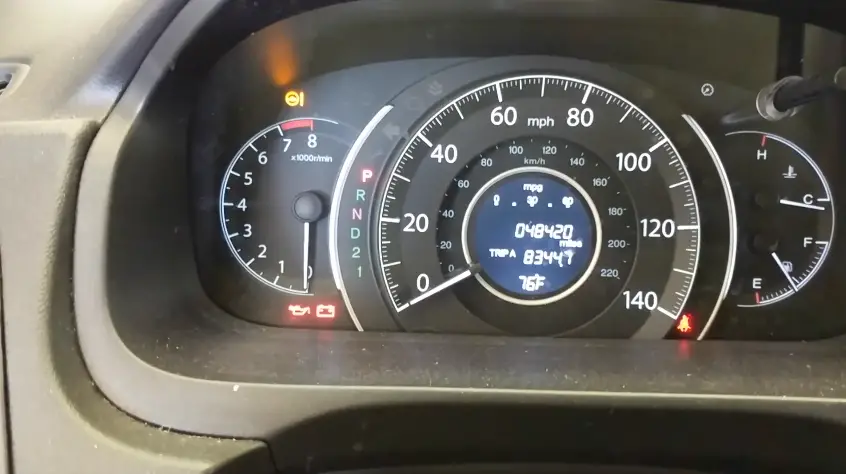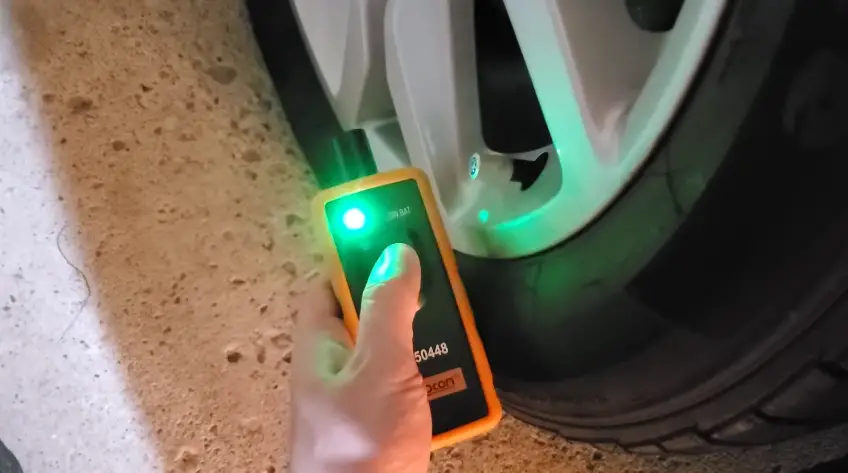To reset the TPMS after a tire rotation, start by ensuring all tires are inflated to the recommended pressure. In most vehicles, you can reset the system through the dashboard by holding the TPMS reset button, or through the infotainment system. Some vehicles may require driving for a few miles to auto-recalibrate the sensors, while others might need a TPMS reset tool.
Tire maintenance is essential for both vehicle safety and performance. One crucial system that ensures tire health is the Tire Pressure Monitoring System (TPMS). This system monitors the air pressure in your tires, alerting you if the pressure drops below a certain threshold. When you rotate your tires, the TPMS might need resetting to recalibrate the sensor positions to the new tire locations. Without this, your vehicle may provide inaccurate pressure readings, compromising both safety and performance.
In this guide, we’ll discuss why it’s necessary to know how to reset TPMS after tire rotation and how to do it.

Contents
Importance of Resetting TPMS After Tire Rotation
Tire rotation is a common practice that helps distribute the wear and tear evenly across all four tires. Typically, tires in the front experience more wear than those in the rear due to steering, braking, and acceleration. Rotating the tires every 5,000 to 7,000 miles ensures a longer lifespan for your tires and contributes to better handling.
However, the TPMS system is designed to monitor specific tires in their assigned positions. When you rotate your tires, you essentially move these positions, but the TPMS sensors remain linked to their original locations unless reset. For example, if your front left tire is moved to the rear left position during a rotation but the TPMS still identifies it as the front left, it may provide incorrect pressure alerts. This is where resetting the TPMS becomes crucial.
How TPMS Works
Before diving into how to reset the TPMS, it’s important to understand how the system works. There are two main types of TPMS: direct and indirect.
Direct TPMS
Direct TPMS uses pressure sensors inside each tire to send real-time pressure readings to the vehicle’s computer system. If the pressure falls below the recommended level, the system will trigger a warning.
- Advantage: Direct TPMS provides precise readings for each tire.
- Reset needs: After a tire rotation, recalibration is necessary to ensure the system knows the new positions of the sensors.
Indirect TPMS
Indirect TPMS doesn’t have pressure sensors inside the tires. Instead, it uses the vehicle’s ABS (Anti-lock Braking System) to measure the rotational speed of each tire. If a tire rotates faster than expected (a sign that it may be under-inflated), the system alerts the driver.
- Advantage: Less expensive and simpler since it uses existing vehicle systems.
- Reset needs: Calibration is still required after a tire rotation since the system relies on knowing where each tire is located.
How to Reset TPMS After Tire Rotation
Resetting the TPMS after tire rotation depends on the vehicle make and model. Below are general steps for resetting the TPMS in different car systems. Always consult your vehicle’s owner manual for specific instructions.
1. Manual Reset via the Vehicle’s Dashboard
Most vehicles come with an option to reset the TPMS manually via the dashboard.
Steps:
- Turn the vehicle ignition to the “ON” position, but don’t start the engine.
- Locate the TPMS reset button, usually found beneath the steering wheel or in the glove box.
- Press and hold the reset button until the TPMS indicator blinks a few times, then release it.
- Start the car and let it idle for about 20 minutes, allowing the system to recalibrate the sensors.
- After driving for a few miles, the system should recognize the new tire positions, and the TPMS light should go off.
2. Using a TPMS Reset Tool
A TPMS reset tool is a specialized device used to reprogram the TPMS sensors. It’s particularly useful for cars with direct TPMS sensors.
Steps:
- Purchase or borrow a TPMS reset tool. These are available at most automotive stores or can be found online.
- Ensure all tires are properly inflated to the manufacturer’s recommended pressure levels.
- Connect the reset tool to the vehicle’s OBD-II port (usually located under the dashboard on the driver’s side).
- Follow the instructions on the reset tool’s interface to recalibrate the TPMS system.
- Drive the vehicle for 10-20 minutes, during which the system will learn the new tire locations and reset the warning light.

3. Reset via Vehicle’s Infotainment System
Some newer vehicles come with a built-in option to reset the TPMS through the infotainment or control screen.
Steps:
- Turn on the vehicle.
- Access the Settings menu via the infotainment screen.
- Navigate to the TPMS or Tire Pressure section.
- Select Relearn or Reset TPMS.
- Confirm the reset and follow any on-screen prompts.
- After confirming, drive for a few miles to allow the system to recalibrate.
4. Drive & Wait for Auto-Reset
In some modern vehicles, the TPMS automatically recalibrates after driving for a few miles post-rotation.
Steps:
- Inflate all tires to the proper pressure levels.
- Drive for about 10-20 minutes at highway speeds.
- The system should reset itself as it recognizes the new tire positions and corrects any warning lights.
5. Professional Assistance
If you’re unsure about resetting the TPMS manually or if the above methods don’t work, it’s advisable to visit a professional mechanic or tire shop. They can use advanced tools to reset the TPMS and check for any potential issues with the sensors.
Troubleshooting Common TPMS Issues After Reset
Sometimes, even after following the reset process, the TPMS warning light might not turn off. Here are a few troubleshooting tips:
- Incorrect Tire Pressure: Double-check that all tires are inflated to the manufacturer-recommended levels.
- Faulty TPMS Sensor: TPMS sensors have batteries that eventually wear out (typically after 5-10 years). If the light remains on, a sensor may need to be replaced.
- Sensor Not Relearned: Ensure that you followed the correct reset procedure for your vehicle. If the system has an auto-reset feature, ensure you’ve driven enough distance for it to recalibrate.
- Software Glitches: Sometimes, software-related issues in the TPMS can cause the system to malfunction. In such cases, visiting a dealership for a diagnostic scan may be necessary.
- Environmental Factors: Sudden temperature drops can cause the TPMS light to come on temporarily. Recheck tire pressure if you suspect weather is the issue.
Frequently Asked Questions
Here are some FAQs about resetting TPMS after tire rotation –
1. Do I need to reset my TPMS after every tire rotation?
Yes. Every time you rotate your tires, you should reset the TPMS so it can accurately monitor the tire pressures in their new positions. Failing to do so can lead to incorrect pressure alerts.
2. How often should tires be rotated?
Tires should generally be rotated every 5,000 to 7,000 miles, or during every oil change. This prevents uneven wear and extends the life of the tires.
3. Can I reset the TPMS without a tool?
In many vehicles, you can manually reset the TPMS through the dashboard or infotainment system without needing a special tool. However, in some vehicles with advanced TPMS systems, a reset tool may be required.
4. Why does the TPMS light come back on after a reset?
This could happen due to several reasons: improper tire pressure, a malfunctioning sensor, or the TPMS system not relearning the new tire positions properly. Checking the tire pressure and following the correct reset procedure should help fix the issue.
5. Can I drive with the TPMS light on?
While it’s not advisable to ignore the TPMS light, if the issue is related to a system fault rather than actual low pressure, driving for short distances may be acceptable. However, ignoring low tire pressure for extended periods can lead to unsafe driving conditions, reduced fuel efficiency, and premature tire wear.
Conclusion
Resetting the TPMS after a tire rotation is an essential step in vehicle maintenance that ensures accurate tire pressure monitoring and overall vehicle safety. Whether you reset it manually via the dashboard, use a TPMS reset tool, or opt for professional help, ensuring the TPMS functions correctly will prevent incorrect warnings and improve your driving experience.